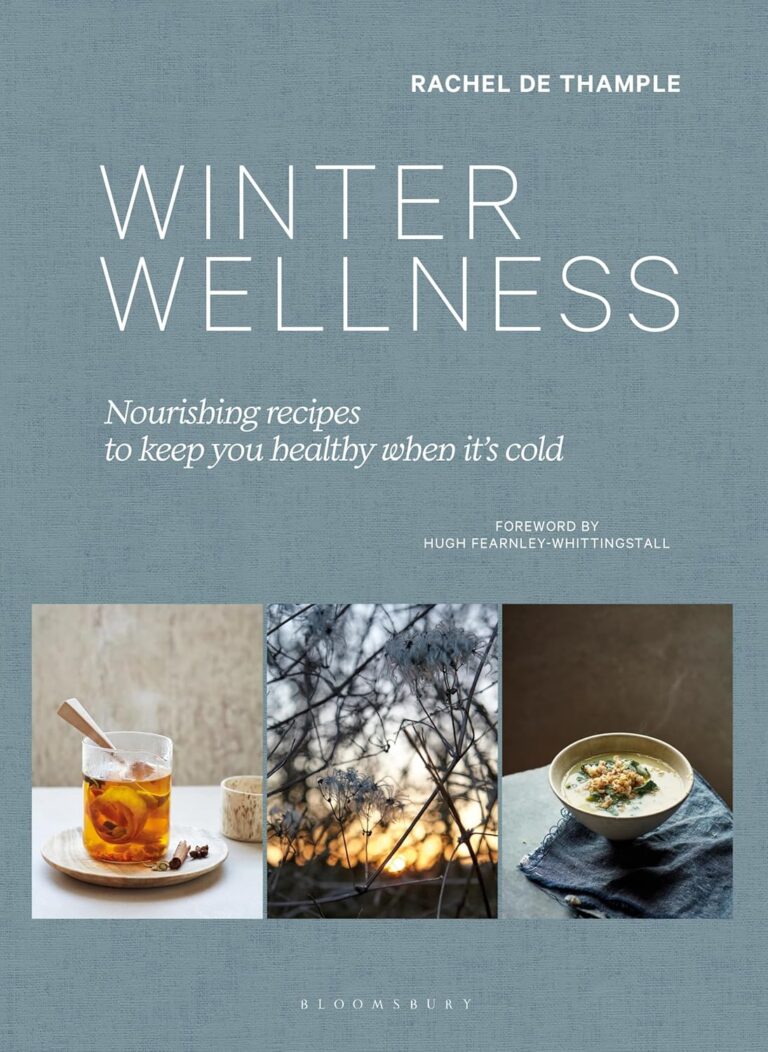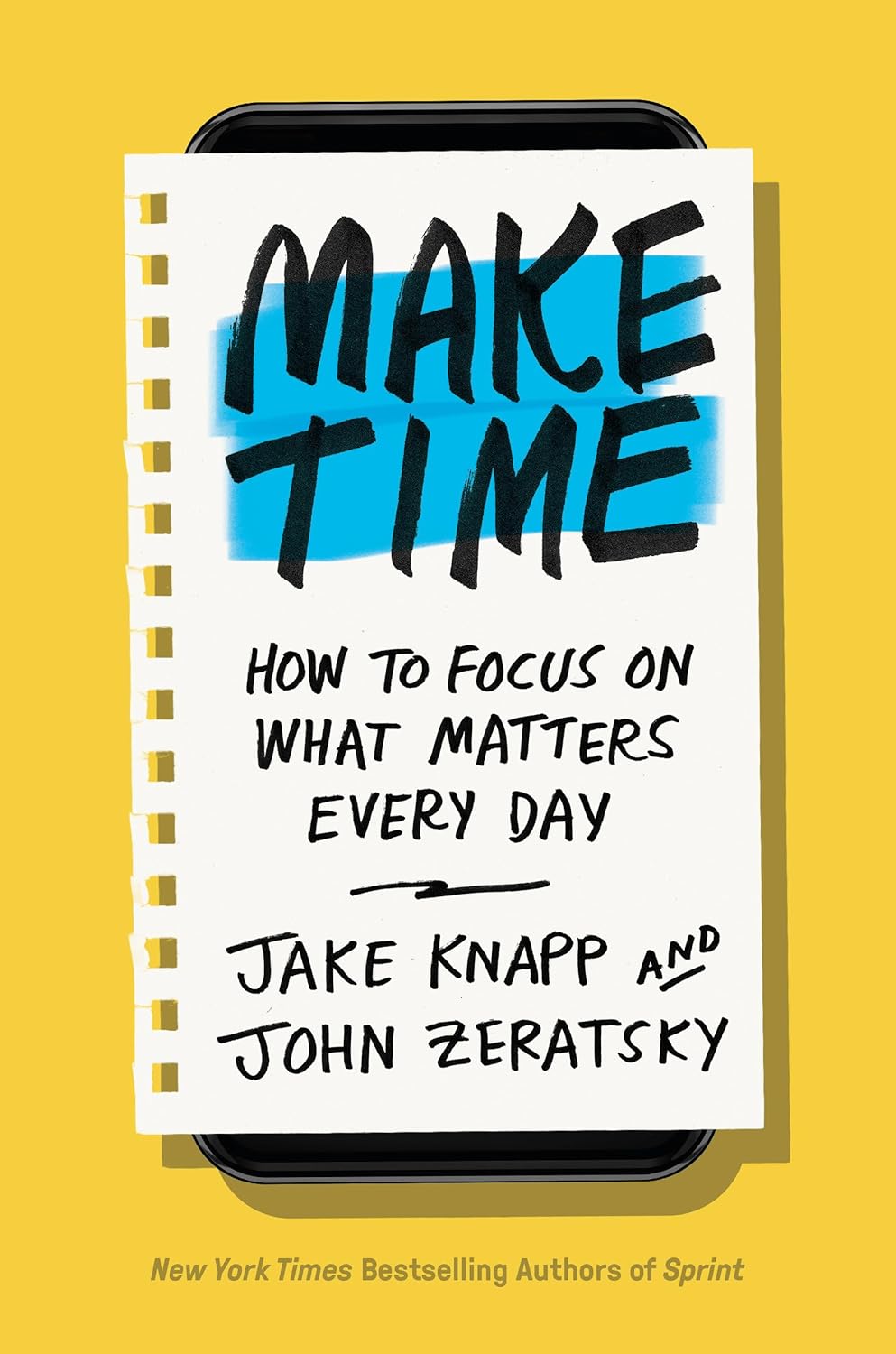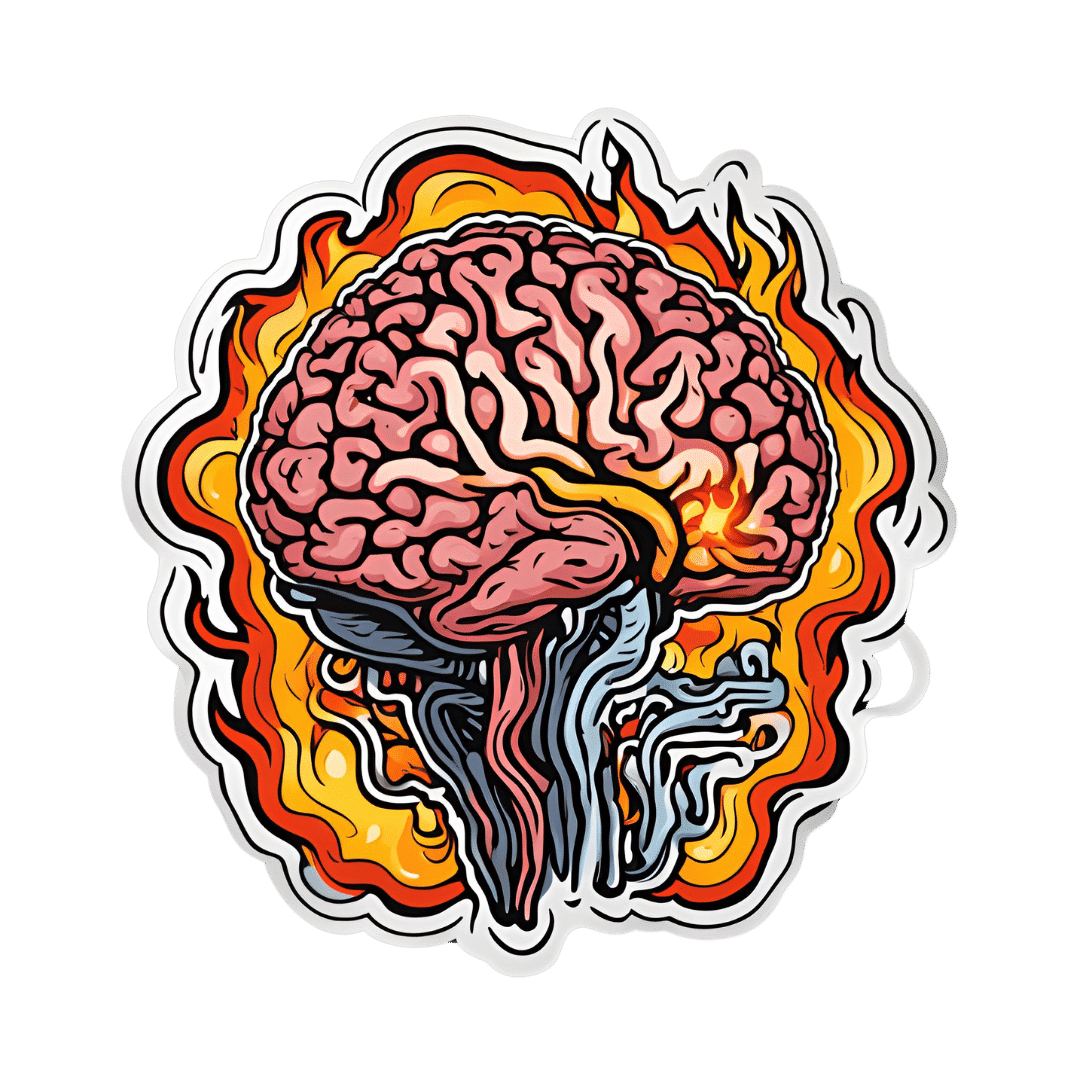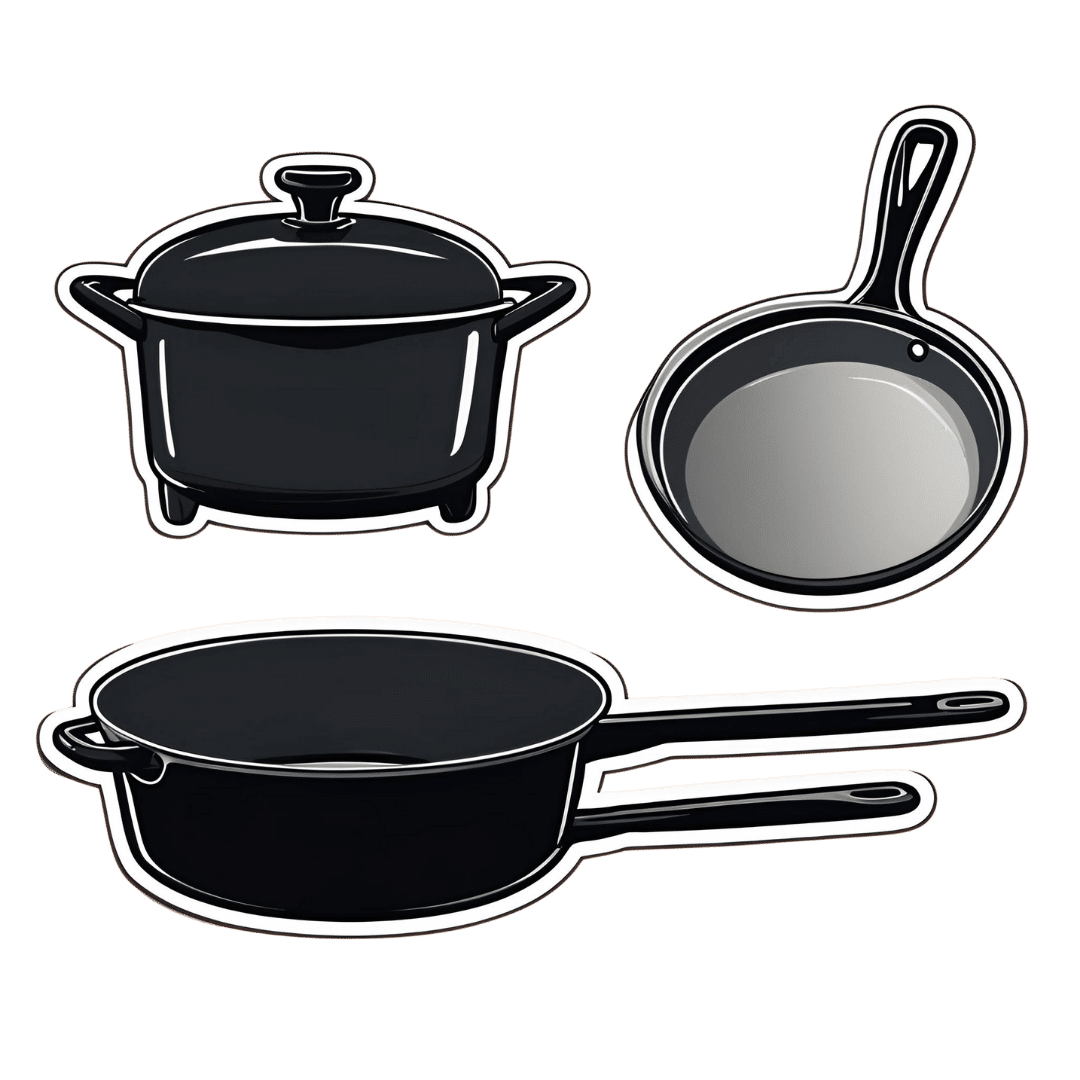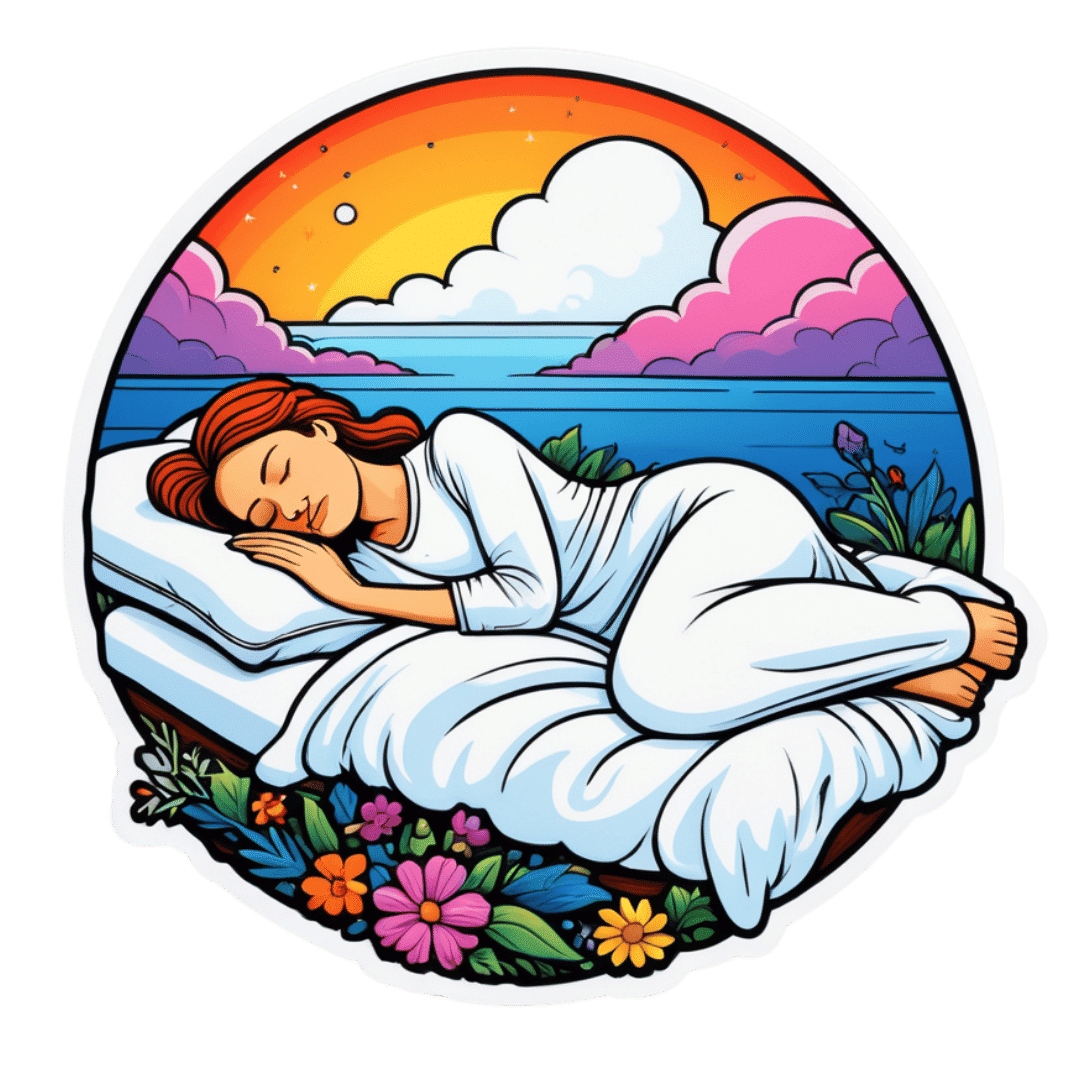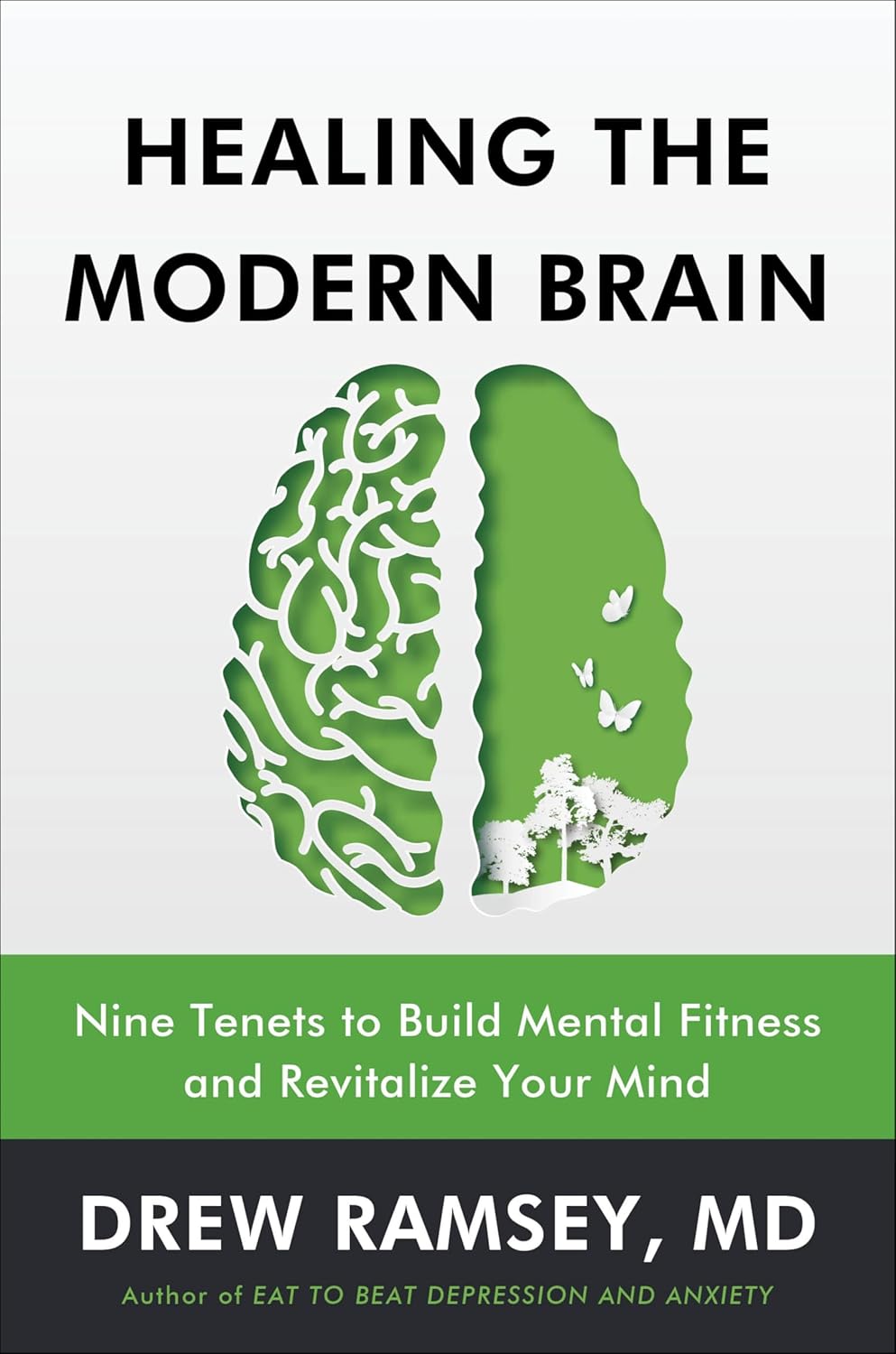
Healing The Modern Brain – by Dr. Drew Ramsey
10almonds is reader-supported. We may, at no cost to you, receive a portion of sales if you purchase a product through a link in this article.
We previously reviewed Dr. Ramsey’s Eat To Beat Depression & Anxiety, and this time [it briefly covers that ground again, and then] it’s more about comprehensive brain health and mental fitness.
He tackles this in a methodical fashion, first briefly covering the need for mental fitness, and the obstacles to same, before the main part of the book—which covers the “how”.
The “how” in question is multifaceted, and the “nine tenets” mentioned in the subtitle cover very obvious things like diet, exercise, sleep, etc, as well as less obvious yet very important things like connection, engagement, purpose, and so forth, and some things that don’t get talked about much at all elsewhere, such as the processes of grounding and unburdening, as he describes them.
The style is mostly narrative with many anecdotes to illustrate points, but with practical advice woven throughout also, all very readable. There’s a respectable bibliography at the back.
Bottom line: if you’d like your brain health to get gradually better instead of gradually worse, this book can help set you on the right track.
Click here to check out Healing The Modern Brain, and heal your modern brain!
Don’t Forget…
Did you arrive here from our newsletter? Don’t forget to return to the email to continue learning!
Recommended
Learn to Age Gracefully
Join the 98k+ American women taking control of their health & aging with our 100% free (and fun!) daily emails:
-
Make Time – by Jake Knapp and John Zeratzky
10almonds is reader-supported. We may, at no cost to you, receive a portion of sales if you purchase a product through a link in this article.
We live in an information-saturated world, and we have done for so long now that it’s easy to forget: we did not evolve for this!
It’s easy to say “unplug”, but the reality is:
We also have to actually function in this fast-paced info-dense world whether we want to or not, and we are expected to be able to handle it.
So… How?
Appropriately enough, authors Knapp and Zeratsky present the answer in a skimmer-friendly fashion, with summaries and bullet points and diagrams and emboldened text forease of speed-reading. Who uses such tricks?!
In short, less living life in “default mode scramble” and more about making an impact in the ways you actually want to, for you.
Share This Post
-
Dial Down Your Pain
10almonds is reader-supported. We may, at no cost to you, receive a portion of sales if you purchase a product through a link in this article.
This is Dr. Christiane Wolf. Is than an MD or a PhD, you ask? The answer is: yes (it is both; the latter being in psychosomatic medicine).
She also teaches Mindfulness-Based Stress Reduction, which as you may recall is pretty much the most well-evidenced* form of meditation there is, in terms of benefits:
No-Frills, Evidence-Based Mindfulness
*which is not to claim it is necessarily the best (although it also could be); rather, this means that it is the form of meditation that’s accumulated the most scientific backing in total. If another equal or better form of meditation enjoyed less scientific scrutiny, then there could an alternative out there languishing with only two and a half scientific papers to its name. However, we at 10almonds are not research scientists, and thus can only comment on the body of evidence that has been published.
In any case, today is going to be about pain.
What does she want us to know?
Your mind does matter
It’s easy to think that anything you can do with your mind is going to be quite small comfort when your nerves feel like they’re on fire.
However, Dr. Wolf makes the case for pain consisting of three components:
- the physical sensation(s)
- the emotions we have about those
- the meaning we give to such (or “the story” that we use to describe it)
To clarify, let’s give an example:
- the physical sensations of burning, searing, and occasionally stabbing pains in the lower back
- the emotions of anguish, anger, despair, self-pity
- the story of “this pain has ruined my life, is making it unbearable, will almost certainly continue, and may get worse”
We are not going to tell you to throw any of those out of the window for now (and, would that you could throw the first line out, of course).
The first thing Dr. Wolf wants us to do to make this more manageable is to break it down.
Because presently, all three of those things are lumped together in a single box labelled “pain”.
If each of those items is at a “10” on the scale of pain, then this is 10×10×10=1000.
If our pain is at 1000/10, that’s a lot. We want to leave the pain in the box, not look at it, and try to distract ourselves. That is one possible strategy, by the way, and it’s not always bad when it comes to giving oneself a short-term reprieve. We balanced it against meditation, here:
Managing Chronic Pain (Realistically)
However, back to the box analogy, if we open that box and take out each of those items to examine them, then even without changing anything, even with them all still at 10, they can each be managed for what they are individually, so it’s now 10+10+10=30.
If our pain is at 30/10, that’s still a lot, but it’s a lot more manageable than 1000/10.
On rating pain, by the way, see:
Get The Right Help For Your Pain
Dealing with the separate parts
It would be nice, of course, for each of those separate parts to not be at 10.
With regard to the physical side of pain, this is not Dr. Wolf’s specialty, but we have some good resources here at 10almonds:
- The 7 Approaches To Pain Management
- 10 Tips To Reduce Morning Pain & Stiffness With Arthritis
- Science-Based Alternative Pain Relief: When Painkillers Aren’t Helping, These Things Might
When it comes to emotions associated with pain, Dr. Wolf (who incidentally is a Buddhist and also a teacher of same, and runs meditation retreats for such), recommends (of course) mindfulness, and what in Dialectical Behavior Therapy (DBT) is called “radical acceptance” (in Buddhism, it may be referred to as being at one with things). We’ve written about this here:
“Hello, Emotions”: Radical Acceptance In CBT & DBT
Once again, the aim here is still not to throw the (often perfectly valid) emotions out of the window (unless you want to), but rather, to neutrally note and acknowledge the emotions as they arrive, á la “Hello, despair. Depression, my old foe, we meet again. Hello again, resentment.” …and so on.
The reason this helps is because emotions, much like the physical sensations of pain, are first and foremost messengers, and sometimes (as in the case of chronic pain) they get broken and keep delivering the message beyond necessity. Acknowledging the message helps your brain (and all that is attached to it) realize “ok, this message has been delivered now; we can chill about it a little”.
Having done that, if you can reasonably tweak any of the emotions (for example, perhaps that self-pity we mentioned could be turned into self-compassion, which is more useful), that’s great. If not, at least you know what’s on the battlefield now.
When we examine the story of our pain, lastly, Dr. Wolf invites us to look at how one of the biggest drivers of distress under pain is the uncertainty of how long the pain will last, whether it will get worse, whether what we are doing will make it worse, and so forth. See for example:
How long does back pain last? And how can learning about pain increase the chance of recovery?
And of course, many things we do specifically in response to pain can indeed make our pain worse, and spread:
Dr. Wolf’s perspective says:
- Life involves pain
- Pain invariably has a cause
- What has a cause, can have an end
- We just need to go through that process
This may seem like small comfort when we are in the middle of the pain, but if we’ve broken it down into parts with Dr. Wolf’s “box method”, and dealt with the first two parts (the sensations and the emotions) as well as reasonably possible, then we can tackle the third one (the story) a little more easily than we could if we were trying to come at it with no preparation.
What used to be:
“This pain has ruined my life, is making it unbearable, will almost certainly continue, and may get worse”
…can now become:
“This pain is a big challenge, but since I’m here for it whether I want to be or not, I will suffer as I must, while calmly looking for ways to reduce that suffering as I go.”
In short: you cannot “think healing thoughts” and expect your pain to go away. But you can do a lot more than you might (if you left it unexamined) expect.
Want to know more from Dr. Wolf?
We reviewed a book of hers recently, which you might enjoy:
Outsmart Your Pain – by Dr. Christiane Wolf
Take care!
Share This Post
-
Walnuts vs Cashews – Which is Healthier?
10almonds is reader-supported. We may, at no cost to you, receive a portion of sales if you purchase a product through a link in this article.
Our Verdict
When comparing walnuts to cashews, we picked the walnuts.
Why?
It was close! In terms of macros, walnuts have about 2x the fiber, while cashews have slightly more protein. In the specific category of fats, walnuts have more fat. Looking further into it: walnuts’ fats are mostly polyunsaturated, while cashews’ fats are mostly monounsaturated, both of which are considered healthy.
Notwithstanding being both high in calories, neither nut is associated with weight gain—largely because of their low glycemic indices (of which, walnuts enjoy the slightly lower GI, but both are low-GI foods)
When it comes to vitamins, walnuts have more of vitamins A, B2, B3 B6, B9, and C, while cashews have more of vitamins B1, B5, E, and K. Because of the variation in their respective margins of difference, this is at best a moderate victory for walnuts, though.
In the category of minerals, cashews get their day, as walnuts have more calcium and manganese, while cashews have more copper, iron, magnesium, phosphorus, potassium, selenium, and zinc.
In short: unless you’re allergic, we recommend enjoying both of these nuts (and others) for a full range of benefits. However, if you’re going to pick one, walnuts win the day.
Want to learn more?
You might like to read:
Why You Should Diversify Your Nuts
Take care!
Share This Post
Related Posts
-
The Worst Cookware Lurking In Your Kitchen (Toxicologist Explains)
10almonds is reader-supported. We may, at no cost to you, receive a portion of sales if you purchase a product through a link in this article.
Dr. Yvonne Burkart gives us a rundown of the worst offenders, and what to use instead:
Hot mess
The very worst offender is non-stick cookware, the kind with materials such as Teflon. These are the most toxic, due to PFAS chemicals.
Non-stick pans release toxic gases, leach chemicals into food, and release microplastic particles, which can accumulate in the body.
One that a lot of people don’t think about, in that category, is the humble air-fryer, which often as not has a non-stick cooking “basket”. These she describes as highly toxic, as they combine plastic, non-stick coatings, and high heat, which can release fumes and other potentially dangerous chemicals into the air and food.
You may be wondering: how bad is it? And the answer is, quite bad. PFAS chemicals are linked to infertility, hypertension in pregnancy, developmental issues in children, cancer, weakened immune systems, hormonal disruption, obesity, and intestinal inflammation.
Dr. Burkart’s top picks for doing better:
- Pure ceramic cookware: top choice for safety, particularly brands like Xtrema, which are tested for heavy metal leaching.
- Carbon steel & cast iron: durable and safe; can leach iron in acidic foods (for most people, this is a plus, but some may need to be aware of it)
- Stainless steel: lightweight and affordable but can leach nickel and chromium in acidic foods at high temperatures. Use only if nothing better is available.
And specifically as alternatives to air-fryers: glass convection ovens or stainless steel ovens are safer than conventional air fryers. The old “combination oven” can often be a good choice here.
For more on all of these, enjoy:
Click Here If The Embedded Video Doesn’t Load Automatically!
Want to learn more?
You might also like to read:
- PFAS Exposure & Cancer: The Numbers Are High
- It’s Not Fantastic To Be Plastic ← for the closely related topic of microplastics and nanoplastics
Take care!
Don’t Forget…
Did you arrive here from our newsletter? Don’t forget to return to the email to continue learning!
Learn to Age Gracefully
Join the 98k+ American women taking control of their health & aging with our 100% free (and fun!) daily emails:
-
Calculate (And Enjoy) The Perfect Night’s Sleep
10almonds is reader-supported. We may, at no cost to you, receive a portion of sales if you purchase a product through a link in this article.
This is Dr. Michael Breus, a clinical psychologist and sleep specialist, and he wants you to get a good night’s sleep, every night.
First, let’s assume you know a lot of good advice about how to do that already in terms of environment and preparation, etc. If you want a recap before proceeding, then we recommend:
Get Better Sleep: Beyond The Basics
Now, what does he want to add?
Wake up refreshed
Of course, how obtainable this is will depend on the previous night’s sleep, but there is something important we can do here regardless, and it’s: beat sleep inertia.
Sleep inertia is what happens when we wake up groggy (for reasons other than being ill, drugged, etc) rather than refreshed. It’s not actually related to how much sleep we have, though!
Rather, it pertains to whether we woke up during a sleep cycle, or between cycles:
- If we wake up between sleep cycles, we’ll avoid sleep inertia.
- If we wake up during a sleep cycle, we’ll be groggy.
Deep sleep generally occurs in 90-minute blocks, albeit secretly that is generally 3× 20 minute blocks in a trenchcoat, with transition periods between, during which the brainwaves change frequency.
REM sleep generally occurs in 20 minute blocks, and will usually arrive in series towards the end of our natural sleep period, to fit neatly into the last 90-minute cycle.
Sometimes these will appear a little out of order, because we are complicated organic beings, but those are the general trends.
In any case, the take-away here is: interrupt them at your peril. You need to wake up between cycles. There are two ways you can do this:
- Carefully calculate everything, and set a very precise alarm clock (this will work so long as you are correct in guessing how long it will take you to fall asleep)
- Use a “sunrise” lamp alarm clock, that in the hour approaching your set alarm time, will gradually increase the light. Because the body will not naturally wake up during a cycle unless a threat is perceived (loud noise, physical rousing, etc), the sunrise lamp method means that you will wake up between sleep cycles at some point during that hour (towards the beginning or end, depending on what your sleep balance/debt is like).
Do not sleep in (even if you have a sleep debt); it will throw everything out.
Caffeine will not help much in the morning
Assuming you got a reasonable night’s sleep, your brain has been cleansed of adenosine (a sleepy chemical), and if you are suffering from sleep inertia, the grogginess is due to melatonin (a different sleepy chemical).
Caffeine is an adenosine receptor blocker, so that will do nothing to mitigate the effects of melatonin in your brain that doesn’t have any meaningful quantity of adenosine in it in the morning.
Adenosine gradually accumulates in the brain over the course of the day (and then gets washed out while we sleep), so if you’re sleepy in the afternoon (for reasons other than: you just had a nap and now have sleep inertia again), then caffeine can block that adenosine in the afternoon.
Of course, caffeine is also a stimulant (it increases adrenaline levels and promotes vasoconstriction), but its effects at healthily small doses are modest for most people, and you’d do better by splashing cold water on your face and/or listening to some upbeat music.
Learn more: The Two Sides Of Caffeine
Time your naps correctly (if you take naps)
Dr. Breus has a lot to say about this, based on a lot of clinical research, but as it’s entirely consistent with what we’ve written before (based on the exact same research), to save space we’ll link to that here:
How To Be An Expert Nap-Artist (With No “Sleep-Hangovers”)
Calculate your bedtime correctly
Remember what we said about sleep cycles? This means that that famous “7–9 hours sleep” is actually “either 7½ or 9 hours sleep”—because those are multiples of 90 minutes, whereas 8 hours (for example) is not.
So, consider the time you want to get up (ideally, this should be relatively early, and the same time every day), and then count backwards either 7½ or 9 hours sleep (you choose), add 20–30 minutes to fall asleep, and that’s your bedtime.
So for example: if you want to have 7½ hours sleep and get up at 6am, then your bedtime is anywhere between 10pm and 10:10pm.
Remember how we said not to sleep in, even if you have a sleep debt? Now is the time to pay it off, if you have one. If you normally sleep 7½ hours, then make tonight a 9-hour sleep (plus 20–30 minutes to fall asleep). This means you’ll still get up at 6am, but your bedtime is now anywhere between 8:30pm and 8:40pm.
Want to know more from Dr. Breus?
You might like this excellent book of his that we reviewed a while back:
The Power of When – by Dr. Michael Breus
Enjoy!
Don’t Forget…
Did you arrive here from our newsletter? Don’t forget to return to the email to continue learning!
Learn to Age Gracefully
Join the 98k+ American women taking control of their health & aging with our 100% free (and fun!) daily emails:
-
One More Reason To Prioritize Sleep To Fight Cognitive Decline
10almonds is reader-supported. We may, at no cost to you, receive a portion of sales if you purchase a product through a link in this article.
We’ve talked sometimes at 10almonds about how important sleep is for many aspects of health, including for brain health, and including in later life.
There’s a common myth that older people require less sleep; the reality is that sleeping less and not dying of it does not equate to needing less.
See also: Sleep: Yes, You Really Do Still Need It!
And: How Sleep-Deprived Are You, Really?
Quantity is not everything though; quality absolutely matters too. We’ve written about that here:
The 6 Dimensions Of Sleep (And Why They Matter) ← duration is just one dimension out of the six
We’ve even gone into some more obscure, but still very important things, such as: How Your Sleep Position Changes Dementia Risk
We’ve also talked about the role of sleep in memory (and forgetting): How Your Brain Chooses What To Remember
With that in mind…
Some more recent science
This study was about spatial memory, but what’s important (in our opinion) is that it’s about solidifying recent learning.
Researchers measured brain activity in rats for up to 20 hours of sleep following spatial learning tasks. Initially, the neuronal patterns observed during sleep mirrored those from the learning phase. However, as sleep progressed, these patterns transformed to resemble the activity seen when the rats later recalled the locations of food rewards. Interestingly, this reorganization happened during non-REM sleep, which means it wasn’t just a case of “the rats were dreaming about their day” (which is a well-established way in which memories do get encoded), but rather, the newly-learned experiences were being actively encoded in the rest of sleep.
This is critical, because in age-related cognitive decline, it’s very common for very long-term memory (VLTM) to remain intact, while LTM and short-term memory (STM) crumble. For example, someone may remember many details of their life from 20 years ago, but forget where they currently live, or what happened in the conversation two minutes ago.
In other words, the biggest problem is not the storage of memories, but rather the encoding of them in the first place.
Which sleep facilitates!
And it’s also important to note that part about it being the rest of sleep, because when the brain is sleep-deprived, it’ll tend to prioritize REM sleep, which is important, but that means cutting back on other phases of sleep, and from this study, we can see that memory & learning will be amongst the things adversely affected by such cuts.
Here’s the paper, for those interested:
Sleep stages antagonistically modulate reactivation drift
And for those who prefer lighter reading, here’s a pop-science article about the same study, which explains it in more words than we can here:
But wait, there’s more!
Sleep resets neurons for new memories the next day, study finds
So, once again… It is absolutely critical to prioritize good sleep.
Want to know more?
Check out:
Calculate (And Enjoy) The Perfect Night’s Sleep
Take care!
Don’t Forget…
Did you arrive here from our newsletter? Don’t forget to return to the email to continue learning!
Learn to Age Gracefully
Join the 98k+ American women taking control of their health & aging with our 100% free (and fun!) daily emails:

